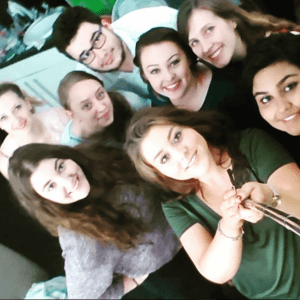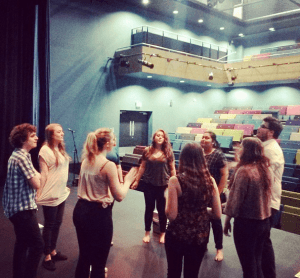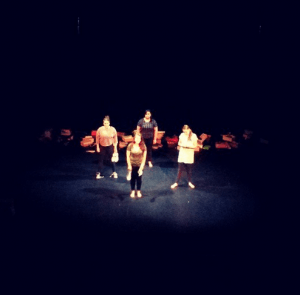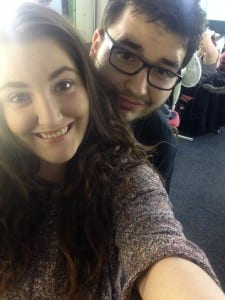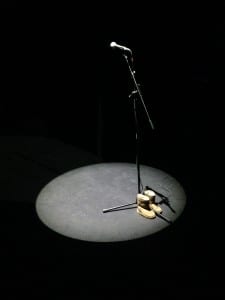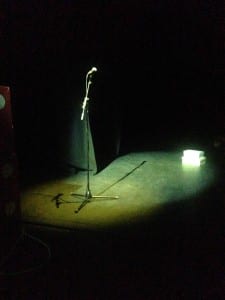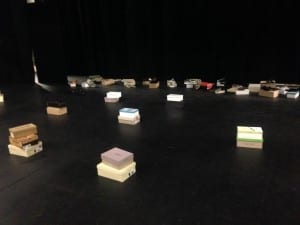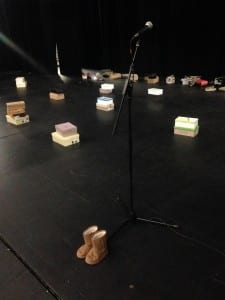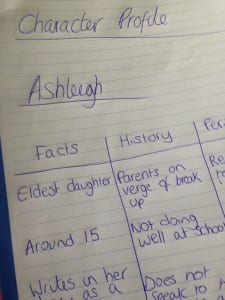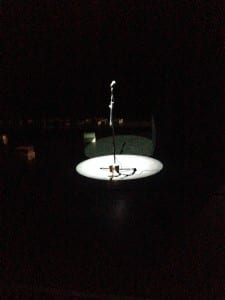I felt performance day went extremely well. Considering that 2 weeks ago we were still very much in the process of blocking, we have come a long way very quickly. In terms of lighting and sound, everything ran smoothly (thanks to Emmie and Tamsyn) and looked and sounded fantastic, despite having a few problems with the wireless microphone earlier on in the day. In terms of acting, on the whole I was pleased with my performance. I do feel however that in the Tinder scene I should have perhaps overacted my sexuality a bit more and also remembered to pause to allow the audience to laugh. Overall our piece appeared to receive positive reactions from our audience members.
As a theatre company we have grown a lot closer. With differing personalities and tastes in the group it has sometimes appeared an impossible challenge to create a performance. This experience has taught me that forming and being within a theatre company cannot be a selfish endeavour. Compromise has been fundamental to our success.
Below are a few photos from show night. Goodbye for now!
Clare Owen
(Photo by Eden Shortt 2015)
(Photos by Forefront Theatre 2015)
(Photo by Clare Owen 2015)
WORKS CITED
Forefront Theatre (2015) Photos of Cast On Stage
Owen, C. (2015) Photo of Clare and Ollie
Shortt, E. (2015) Photo of Cast Backstage
